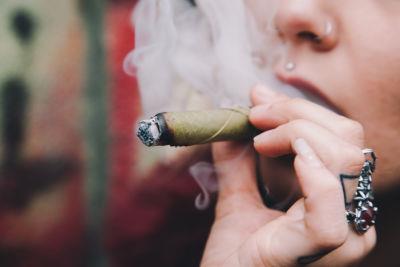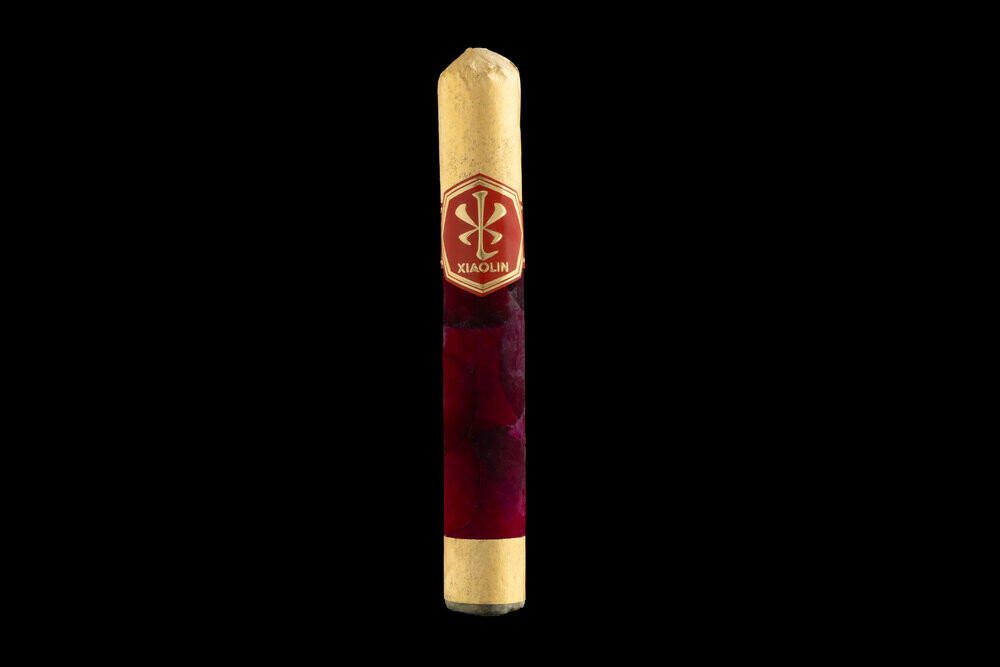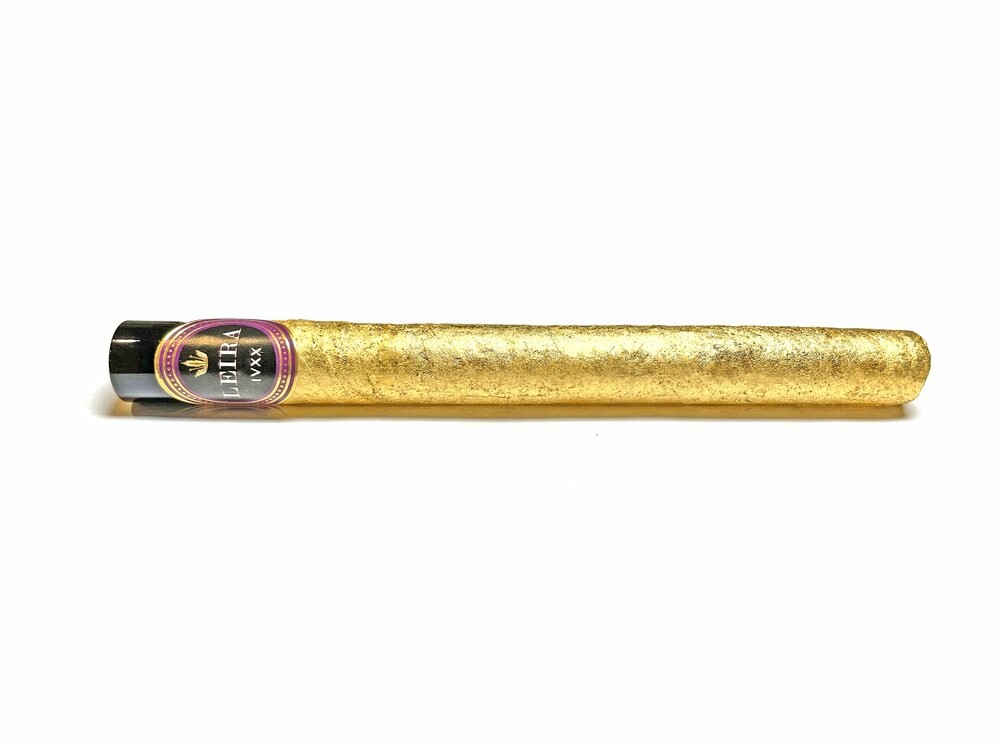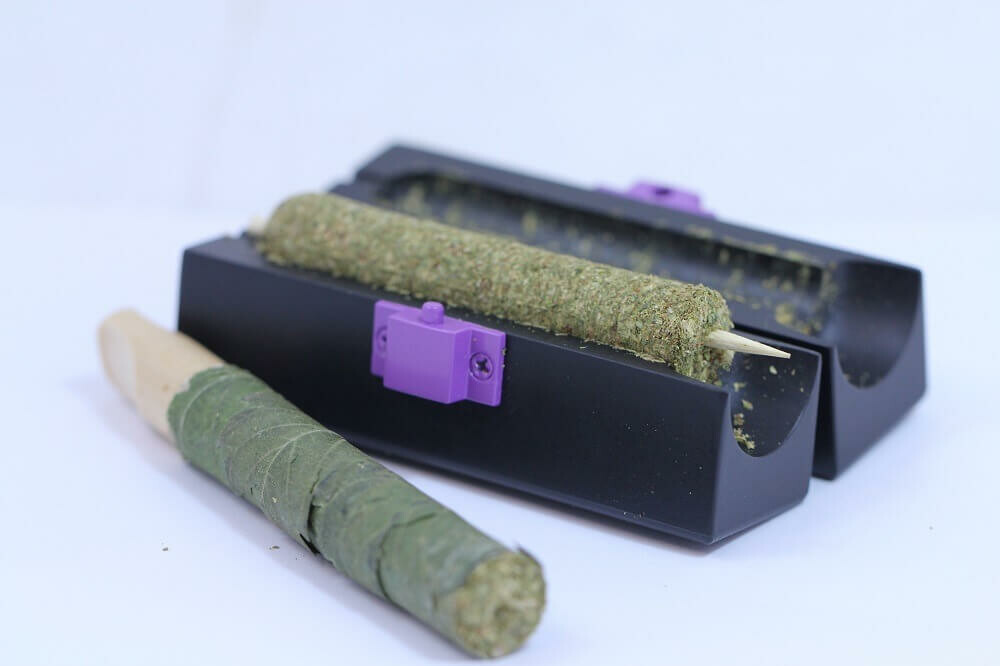
Friday June 2, 2023
By Trevor Ross
 Education
Education
Cannagar is the shortened name for a cannabis cigar. Similar to traditional cigars made entirely of tobacco, cannagars contain a large amount of cannabis, wrapped in cannabis leaves which are often then glued together with cannabis concentrate.
Cannagars should not be confused with blunts, which are commonly made by emptying a cigar or cigarillo case and refilling it with a combination of cannabis and tobacco. So cannagars and blunts both look and smoke like cigars, but blunts include tobacco whereas cannagars contain only marijuana, and are sometimes even rolled in cannabis leaves.
Smaller cannagars contain about two grams of flower, while larger ones may contain upward of 10 grams, and are built to burn anywhere from 30 minutes to two hours.
This article offers an introduction to cannabis cigars, reviews some pros and cons, and includes tips on how to roll a cannagar.
What are Cannagars
Cannabis cigars, canna-cigars, or cannagars are intended for recreational users and offer little to no therapeutic benefit beyond other cannabis consumption methods. Artisan canna cigars do one thing and that is: be a lot of weed. But they do that one thing well, and they look good doing it, which is also part of the point. For generations, cigars have been synonymous with luxury as they are often hand rolled from the finest tobacco and traded internationally. Unlike cigarettes, which are more disposable and so packed with inferior tobacco, cigars are typically filled with one or more kinds of hand-selected tobacco, carefully curated for a superior smoking experience, and cannabis cigars are no different.

For instance, the Godfather VSXL, produced by Xiaolin, offers 10 grams of flower selected for a symphonic blend of terpenes, and sealed with another two grams of concentrate which provide an additional layer of flavor and mouthfeel. Customers with about $250 to spend on them can even select one wrapped in rose petals. Leira, based in Washington state, offers a comparable cannagar of 12 grams for $420. While these are not wrapped in rose petals, they are instead wrapped in luscious green cannabis leaves and left to cure for an additional month. Those with even more exclusive taste will appreciate the 24k gold leaf option for a mere $1,000.

Cannagars are unapologetic statements of taste and luxury that are great for celebrations, and make excellent gifts for the “cannaisseur” in your life. But if you want to taste the experience without the steep cost, cannagars can be rolled at home with a little equipment and patience.
How to Roll a Cannagar
To make a cannabis cigar, you will need approximately five to 10 grams of ground cannabis flower (depending on your desired size), cannabis concentrate which will serve as glue, a skewer like those used for shish kabobs to build the cigar around, rolling papers or fan leaves to wrap the piece in, and perhaps a specialized rolling machine to act as a third hand. In absence of a cigar rolling machine, hemp twine will be required to hold everything together.
To roll a cannagar with a mold, like these from Purple Rose Supply, begin by inserting the skewer into the hollow chamber, then begin filling the chamber with ground cannabis. The stickier herb, the better for this stage. Not only is the resinous flower more potent, but it will also hold together better. Don’t be afraid to pack cannagars too tightly. While joints and bowls benefit from a little airflow, a homemade cannagar will get plenty of airflow from the hole skewered through the middle. And a tightly packed cannagar will burn much longer.

Once the mold is packed full, leave it to rest in a cool, dry location for two days, allowing the ground flower to settle into its new shape. After two days, unlock the mold and you should have a smooth cylinder of weed on a stick, resembling a shish kabob. Leave the skewer to use as a handle while wrapping the cigar.
Cannagars can be wrapped in cannabis leaves or simple rolling papers, and are typically glued with concentrate. Loose concentrate can be warmed and brushed over the core of the cigar, or concentrate from a syringe can be drizzled around it. From there, rolling papers can be wrapped around the core in perpendicular or diagonal fashion for different designs. For those who prefer to use cannabis leaves, aim for indica leaves which are usually broader and easier to roll than thinner, lighter sativa leaves. Regardless of which leaves you use, leaf-wrapped cannagars should be left in an airtight container to cure for four weeks to reduce bitter plant compounds and improve flavor.
Making cannagars without a mold may be more difficult, but the result is still stupendous, and resembles something closer to a traditional Thai Stick.
Thai Sticks
Thai Sticks are an eastern precursor to the cannagar that provide the foundational principles at work in a cannabis cigar. Similar to cannagars, Thai sticks are made by pressing or packing cannabis around a skewer, usually coated in cannabis oil. But instead of being wrapped in cannabis leaves, they are wound in hemp twine, or hemp wick, to hold everything in place. They are then dipped in cannabis oil to help hold together, (originally, some were even dipped in opium).

To smoke a Thai Stick, the twine is unwound and the skewer is removed resulting in the air hole, and then they are lit and smoked like cigars. They look a little more rustic, but the effect is the same: a potent and long-lasting smoking experience.
Conclusion
Cannagars, or cannabis cigars, are a luxury lifestyle product for users interested in a long-lasting, top-shelf smoking experience. Unlike blunts which are cut with tobacco, cannagars are composed entirely of cannabis from the core to the marijuana leaf wrap to the cannabis oil used to glue it all together. Carrying between five and 12 grams each, they are not meant to be taken lightly, but instead are celebrations of cannabis itself, offering users both flower and concentrate in a sleek, stylish shell. But they can also be rolled at home, either with a dedicated device or bound by hand with hemp twine in the tradition of Thai Sticks.
Got a good story about your last cannagar or Thai Stick? Share it with us in the comments below!
FAQs
What are Cannagars wrapped in?
Premium cannagars are rolled in cannabis leaves, but they can also be found rolled in hemp or rice paper, or even rose petals.
How do you roll Cannagars?
Cannagars are most commonly rolled with the help of specialized devices that hold everything in place as the user packs the core. Cannagars made entirely by hand are usually wrapped in hemp twine to hold them in place. These are more commonly recognized as Thai Sticks.
How long do canna cigars last?
Depending on the length and ring size, cannagars typically burn anywhere between 30 minutes and two hours.







